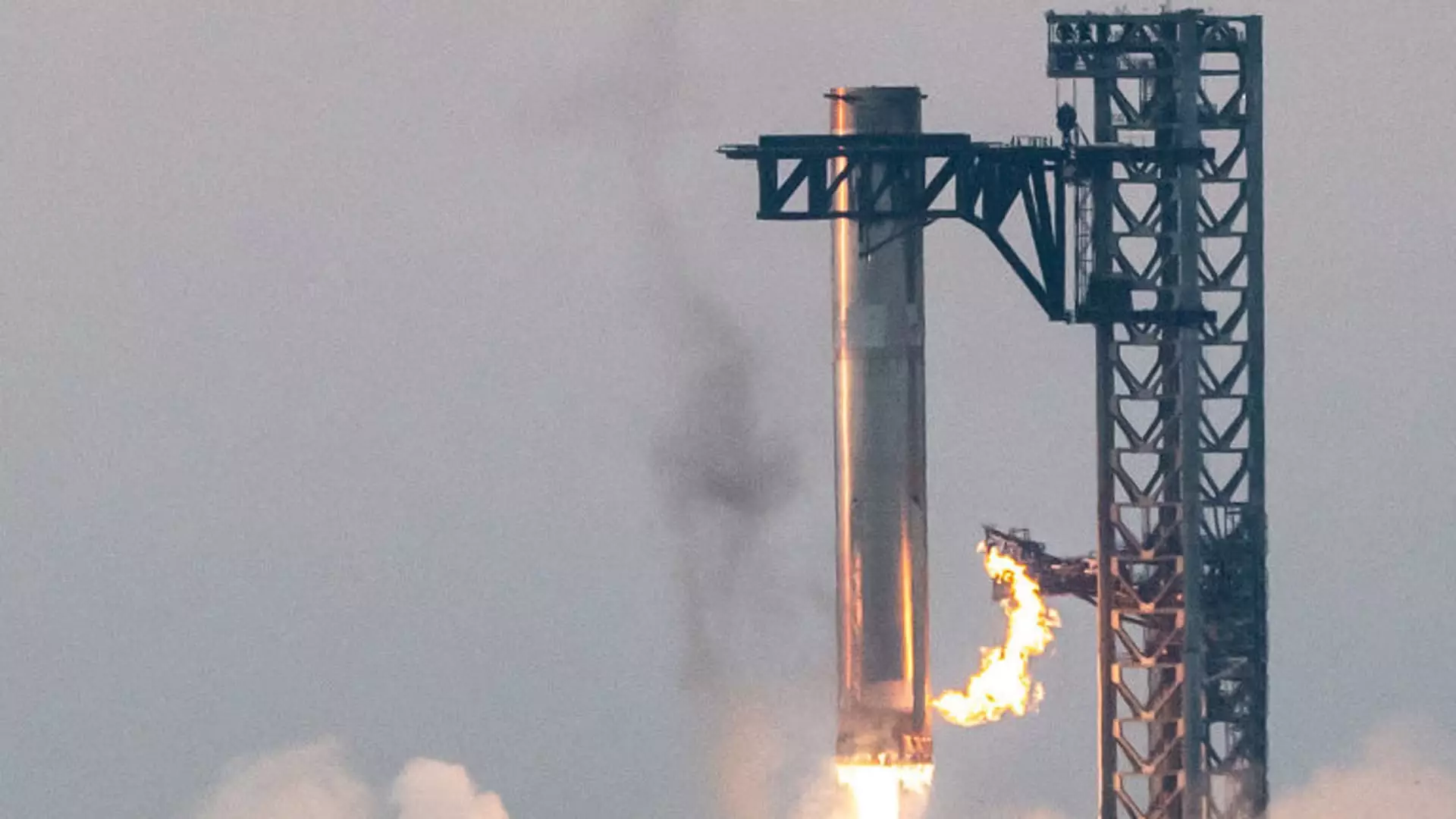On a significant Sunday morning, SpaceX marked a groundbreaking moment in space exploration with the launch of its fifth test flight of the Starship rocket. At 8:25 a.m. ET, from the precipice of innovation at its Starbase facility near Brownsville, Texas, SpaceX succeeded in catching the enormous “Super Heavy” booster, which towers over 20 stories high. This achievement signifies a crucial step for the company in its ambitious quest to transform Starship into a fully reusable rocket system. Indeed, the successful recovery of the booster showcases the enormous strides SpaceX has made in rocket reusability, aligning with the broader trend in the aerospace industry towards sustainable practices.
As soon as the Super Heavy booster completed its impressive trajectory back to Earth, it skillfully landed on the mechanical arms of the company’s launch tower, creating a wave of excitement among engineers and observers alike. SpaceX’s communications manager, Dan Huot, famously remarked during the live webcast, “What we just saw, that looked like magic.” The enthusiasm shown by SpaceX leadership reflects not just satisfaction but a deep-seated belief in the engineering and operational capabilities of their team. NASA Administrator Bill Nelson also praised the achievement, expressing optimism about its implications for future lunar missions under the Artemis program.
The mission involved advanced planning and intricate execution, reaching new heights in both technology and project management. By showcasing its ability to land the Super Heavy booster precisely where it was intended, SpaceX has taken a significant leap forward, demonstrating that it can build on the lessons learned from prior test flights.
The Starship rocket’s mission did not end with the booster’s return; the spacecraft itself embarked on a journey that offered a glimpse into its capabilities. Following separation from the booster, Starship traveled approximately halfway around the Earth, before reentering the atmosphere and successfully splashing down in the Indian Ocean. Notably, this test flight did not carry any crew, a decision aligned with SpaceX’s cautious approach to human spaceflight. However, the company firmly believes that once tested extensively, Starship will embark on its first crewed missions.
SpaceX’s testing regimen emphasizes a philosophy of continuous improvement; each flight adds to the foundation of knowledge and technology necessary for success. With four prior flights, the company has consistently achieved more every time, showcasing an iterative design and testing process that promotes rapid progress.
The Starship’s importance extends beyond the realm of commercial space travel and reusability; it plays a pivotal role in NASA’s Artemis program, which aims to return astronauts to the surface of the Moon. SpaceX’s contract with NASA to utilize Starship for lunar landings underscores the rocket’s potential to become a workhorse for space exploration. The partnership is a testament to how public and private entities can collaborate to fulfill ambitious goals in space exploration.
That said, SpaceX’s journey has not been without challenges. Issues with environmental assessments led to scrutiny from the Federal Aviation Administration (FAA) and regulatory bodies. While the FAA approved the launch license sooner than expected, SpaceX executives vocally criticized the agency, arguing that unnecessary environmental analyses delayed progress. This spotlight on regulatory hurdles serves as a reminder that the quest for space innovation must navigate through complex bureaucracies.
The intricate technology that underpins the Starship system is impressive, with the Super Heavy booster composed of 33 Raptor engines capable of producing a staggering 16.7 million pounds of thrust. By comparison, this thrust is double that of NASA’s Space Launch System, illustrating the raw power harnessed in the Starship program. The design not only emphasizes power but also sustainability, as the rocket is designed to operate with liquid oxygen and liquid methane, aligning with modern-day imperatives for eco-conscious engineering.
SpaceX has made significant investments in infrastructure to support not only its testing but also ensure environmental compliance. Although fines related to water discharge at the Texas launch site have raised concerns, the company maintains a focus on balancing its pioneering activities with ecological responsibility. Their commitment to a zero-compromise approach in ensuring safety and sustainability is a cornerstone of SpaceX’s operational ethos.
As SpaceX moves toward the goal of flying hundreds of missions, the implications of the Starship program resonate beyond its own achievements. It represents a future where humanity may extend its reach into space, exploring and exploiting resources for the betterment of life on Earth and beyond. With the latest flight marking yet another milestone, the space community watches eagerly as SpaceX continues to push boundaries, aiming for a future where established limitations are shattered and the stars are not just a distant dream but a tangible reality.


Leave a Reply